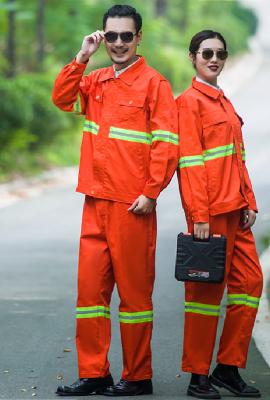- Afrikaans
- Albanian
- Arabic
- Armenian
- Basque
- Belarusian
- Bengali
- Bulgarian
- Croatian
- Czech
- Danish
- Dutch
- English
- Esperanto
- Finnish
- French
- German
- Greek
- Hebrew
- Hindi
- Indonesian
- irish
- Italian
- Japanese
- Javanese
- kazakh
- Rwandese
- Korean
- Kyrgyz
- Latin
- Latvian
- Luxembourgish
- Malay
- Myanmar
- Nepali
- Persian
- Polish
- Portuguese
- Romanian
- Russian
- Serbian
- Slovak
- Spanish
- Swedish
- Tagalog
- Tajik
- Turkish
- Ukrainian
- Uzbek
- Vietnamese
Nov . 11, 2024 01:39 Back to list
Durable Welding Jacket Designed for Flame Resistance and Safety in Harsh Environments
The Importance of Flame Resistant Welding Jackets in Industrial Safety
Welding is a critical process in various industries, including construction, automotive, and manufacturing. While welding is essential for creating and repairing numerous products, it also poses significant safety hazards to workers. Among the many protective measures available, the flame resistant welding jacket stands out as a crucial piece of safety equipment designed to protect workers from flames, sparks, and heat.
Understanding Flame Resistance
Flame resistant (FR) materials are designed to resist ignition and self-extinguish when the source of heat is removed. This characteristic is particularly important for welders who work in environments where sparks and intense heat are commonplace. The use of FR materials can significantly reduce the risk of burns and injuries caused by fire and hot materials.
Welding jackets are typically made from specialized fabrics that have been treated or constructed to provide the necessary flame resistance. Common materials include cotton denim treated with flame retardant chemicals, aramid fibers, and other synthetic blends that offer both flexibility and durability.
Key Features of Welding Jackets
When considering flame resistant welding jackets, several features contribute to their effectiveness
1. Material Composition The fabric must not only be flame resistant but also durable enough to endure the rigors of welding work. Materials such as treated cotton, leather, and special synthetic fibers are commonly used.
2. Fit and Comfort A well-fit welding jacket is essential for mobility and comfort. Jackets should allow for ease of movement without being too loose, which can pose an additional risk by catching sparks or flames.
3. Protection Level Different jackets offer varying levels of protection based on their design and material. It is vital for welders to choose jackets that meet or exceed industry safety standards.
flame resistant welding jacket

4. Additional Safety Features Many welding jackets come with extra features such as high collars, adjustable cuffs, and pockets for tools, which enhance safety and functionality. Some jackets even include reflective strips for visibility in low-light environments.
Compliance with Safety Standards
Safety in the welding industry is regulated by a number of standards and organizations. In the United States, the Occupational Safety and Health Administration (OSHA) has established guidelines that employers must follow to ensure worker safety. Flame resistant garments should meet the standards set forth by National Fire Protection Association (NFPA) and American Society for Testing and Materials (ASTM). Compliance with these standards is not just recommended; it is often a legal requirement.
Employers have a responsibility to provide appropriate personal protective equipment (PPE) for their workers. This includes flame resistant jackets that offer adequate protection against welding hazards. Regular training and education on the proper use and maintenance of PPE are equally vital to reinforce safety protocols in the workplace.
The Role of Welders in Ensuring Their Safety
While employers play a significant role in providing safe work environments, welders themselves must also take responsibility for their safety. This includes wearing the appropriate protective gear consistently and correctly. Welders should invest in high-quality flame resistant jackets and regularly inspect them for signs of wear and tear. A damaged jacket can compromise safety, making it essential to replace worn-out equipment promptly.
Furthermore, welders should familiarize themselves with the specific hazards of their work environment and adapt their protective measures accordingly. Continuous education on safety practices, including the proper handling of welding equipment and materials, can significantly mitigate risks.
Conclusion
Flame resistant welding jackets are an indispensable element of personal protective equipment in welding environments. By selecting the right jacket, welders can greatly reduce the likelihood of burns and injuries caused by heat, flames, and sparks. Compliance with safety standards and proper training are essential to fostering a culture of safety in the workplace. Ultimately, investing in high-quality flame resistant work gear not only protects welders but also contributes to overall efficiency and morale in the industry. As the demand for skilled welders continues to grow, ensuring their safety remains a paramount concern that should never be overlooked.
-
Work Reflective Vest: A Silent Guardian of Security
NewsJul.10,2025
-
Vest Reflective Safety: A Safety Lighthouse in Low Light and High Traffic Environments
NewsJul.10,2025
-
Soft Cotton Polo Shirts: A Fashionable and Practical Choice for Multiple Scenarios
NewsJul.10,2025
-
Soft Cotton Polo Shirts: A Fashionable and Practical Choice for Multiple Fields
NewsJul.10,2025
-
Reflective Vest: The Light of Industry and Outdoor Safety Protection
NewsJul.10,2025
-
Polo Shirt: A versatile and fashionable item that can be worn in one outfit
NewsJul.10,2025




